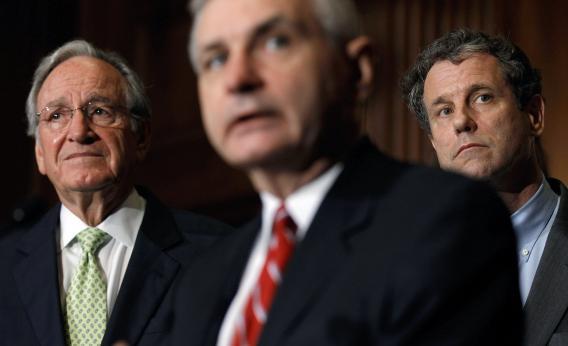Keeping student loan rates low is requiring some devilish financial engineering from U.S. lawmakers. To cover the cost of the education subsidy, they’re blessing some aggressive accounting for government-backed pensions. The plan could put taxpayers on a bigger hook for both retirees and graduates.
The hocus-pocus is tucked away in a transportation bill, passed as most Americans were gearing up for Independence Day festivities. Federal spending on highways and related infrastructure has grown too large to rely on the gasoline tax alone. So to cover the $14 billion hole and another $6 billion to reduce student borrowing rates, Washington essentially raided its pension guarantee fund.
The Pension Benefit Guaranty Corp, which insures private retirement plans, can ill afford it. The fund’s net deficit last year increased to $26 billion.
Congress is leaning on the PBGC in a similar way it did Fannie Mae and Freddie Mac earlier this year to pay for a temporary payroll tax cut. Then, it hiked mortgage insurance premiums for 10 years to pay for a mere two-month extension. This time, it uses a decade’s worth of boosted pension guarantee premiums for roads and a year of cheaper tuition loans.
It gets worse. Congress also conjures up another $9 billion in revenue over 10 years to fill the remainder of the gap by relaxing accounting standards for pension funds. It allows employers to use discount rates based on average corporate bond rates over 25 years instead of two years. That lets them contribute less money for the same expected return. With fewer contributions, corporate tax deductions fall and government revenue magically rises.
It’s a clever solution for everyone but taxpayers. To cover coming payouts, pension contributions needed to rise by at least $50 billion annually for the rest of this decade, according to George Mason University’s Mercatus Center. So, the accounting change effectively makes a taxpayer bailout even more likely.
What’s more, by further subsidizing student loans, there’s an even greater chance a rescue will be needed for them, too. Barclays estimates one could cost $225 billion. Such gimmickry won’t work any better for Uncle Sam than it does for Wall Street.
Read more at Reuters Breakingviews.
